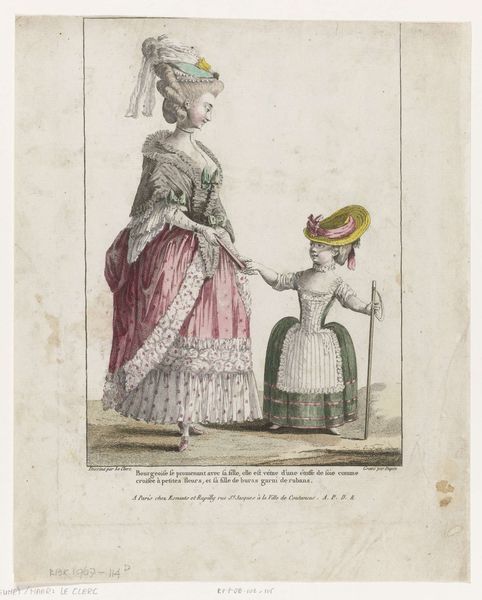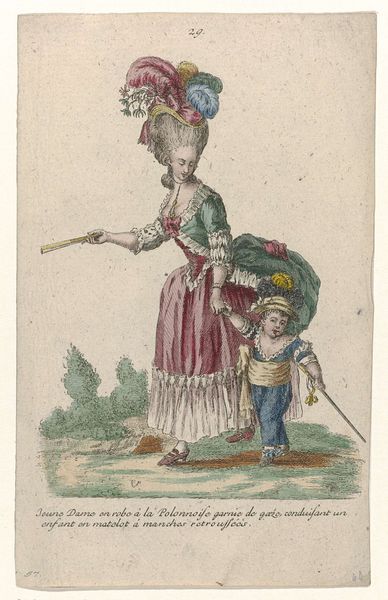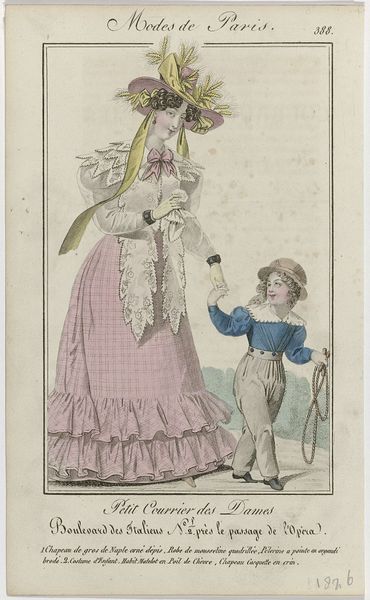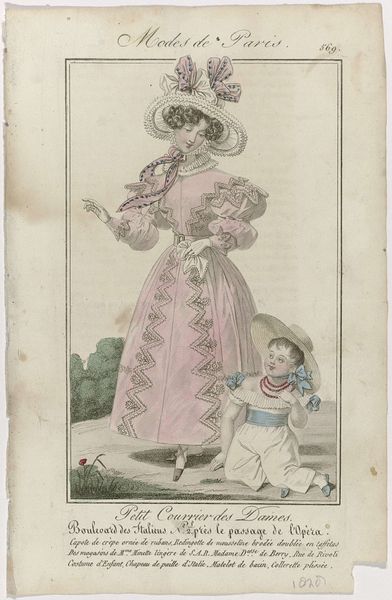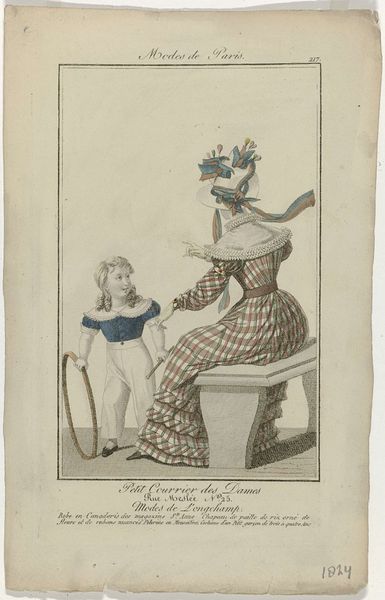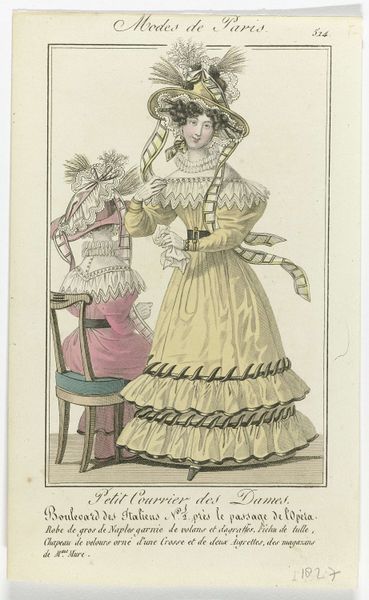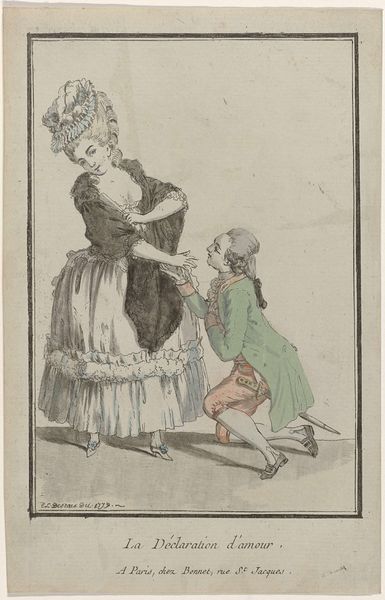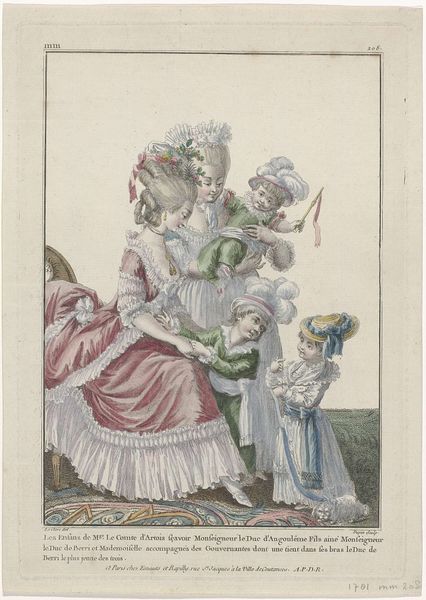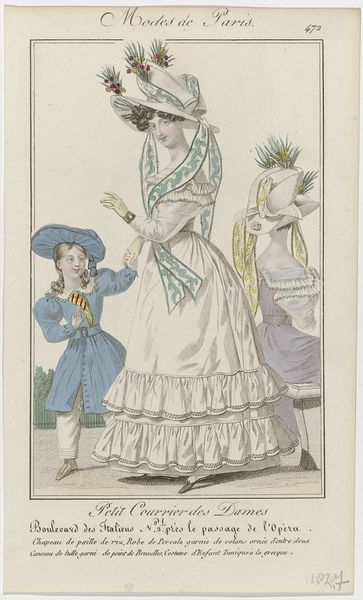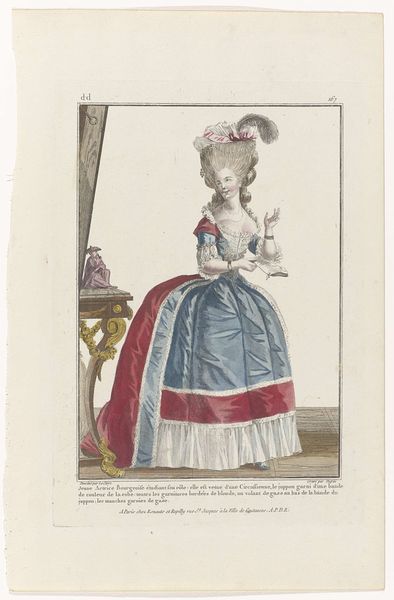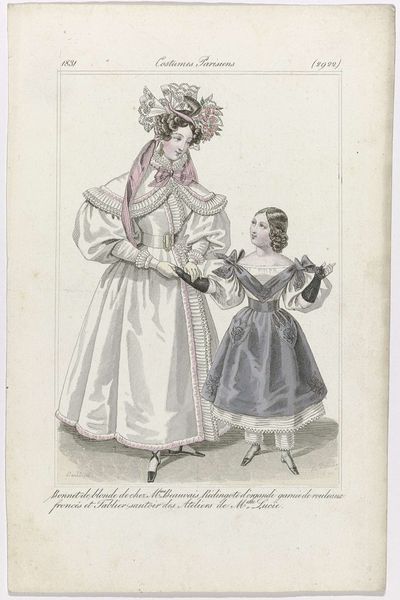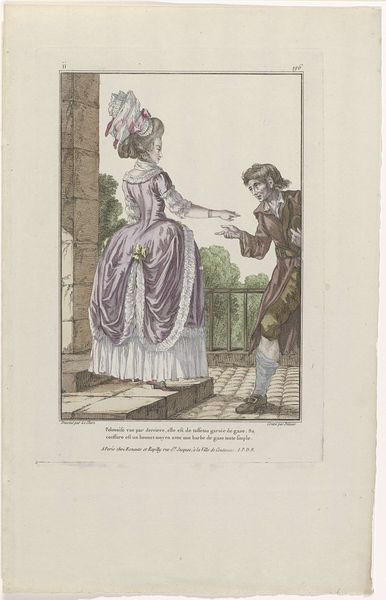
Gallerie des Modes et Costumes Français, 1780, dd 164 : Autre Lévit (...) 1780
0:00
0:00
Dimensions: height 281 mm, width 193 mm
Copyright: Rijks Museum: Open Domain
Curator: This print from 1780, "Gallerie des Modes et Costumes Français", is by Charles Emmanuel Patas and part of a series documenting French fashion. The medium combines etching and delicate watercolor. What strikes you first about it? Editor: The interplay of mauve and the height of the hat! It's wonderfully, terribly, exuberant. But the monkey adds a sort of, uneasy counterpoint. Curator: The monkey in such images can't be separated from its roots in the orientalist fantasies so prevalent in France at this time. Think about what it means to represent enslaved people as animalistic creatures or luxury objects in these domestic scenes. The fashionable lady teasing the animal only enforces the notion of a vast divide separating them, reifying the social structures of colonialism. Editor: Certainly. However, note how the line traces every detail of fabric—the cascading gathers of her robe à la française. I think there's a structural interest here that overrides, in the immediate sense, social commentary. Look how the light defines each plane, lending weight and texture to the silks and taffetas. Curator: But isn't that emphasis on surface itself a political choice? In portraying her with such extravagance, aren't we meant to also acknowledge the underlying class divisions of pre-revolutionary France and its overseas extraction of raw goods by brutal force? How complicit are images of pleasure? It begs us to consider questions of wealth, social status, and cultural appropriation, which cannot be detached from broader power dynamics. The visual appeal serves to mask an inherently unequal arrangement. Editor: Perhaps. But does it then become impossible to simply observe the formal excellence of a print as a thing of beauty in its own right? I am drawn back to that hat! The line and tonality, the contrast… Curator: These objects themselves, though, are loaded, a reflection of a certain mentality. Can an image truly divorce itself from its history? Editor: Probably not entirely. Perhaps a deeper understanding comes from holding both perspectives at once. Curator: An enriched perspective, definitely, with a more complete understanding.
Comments
No comments
Be the first to comment and join the conversation on the ultimate creative platform.
